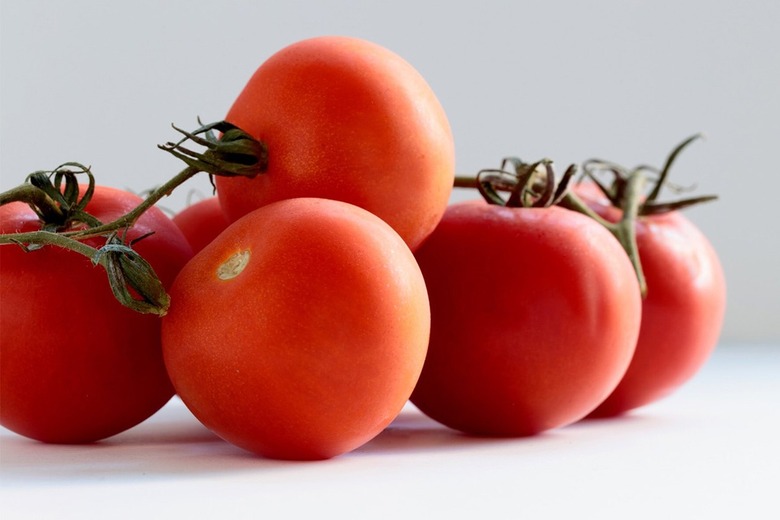You've Been Storing Your Tomatoes All Wrong
At their prime, tomatoes are deliciously magical. They're mildly sweet and pleasantly juicy, making them ideal for many dishes. The only catch? If they aren't stored properly, tomatoes can go bad in the blink of an eye.
That being said, it never hurts to reconsider your storage technique. After all, the right way to store tomatoes isn't just about choosing the countertop versus refrigerator. It also depends on other factors, like the type and ripeness of the tomatoes. Ahead, a food safety pro gives us the lowdown.
How to Store Unripe Tomatoes
How to Store Unripe Tomatoes
First thing's first: Are your tomatoes ripe? Unripe red tomatoes are light green and very firm, while ripe tomatoes are bright red and more tender. You can totally eat unripe tomatoes, but if that's not on the agenda, place them (unwashed) in a loosely closed paper bag at room temperature, or 65 to 70 degrees Fahrenheit, says Kimberly Baker, Ph.D., R.D., L.D., director of the food systems and safety program team at Clemson University Extension Service. Check the tomatoes daily and take them out of the bag when they're red and slightly firm.
The Best Place to Store Tomatoes
The Best Place to Store Tomatoes
According to Baker, uncut cherry, grape, Roma, and cluster tomatoes can be stored at room temperature for up to five days. If you're unable to use them within five days, then transfer them to the refrigerator. Meanwhile, all other types of uncut tomatoes can be stored at room temp for two to three days and refrigerated after then. (BTW: Avoid washing your tomatoes before putting them away. Otherwise, "water on the tomato could promote mold growth," Baker explains. Hard pass.)
While your precious tomatoes are on the countertop, "store [them] away from sunlight with the stem end facing up," advises Baker. "Tomatoes should not be stored with the stem facing down, as this will cause bruising on top."
If you need to move the tomatoes to the fridge, store them in the vegetable crisper drawer, says Baker. "Place the tomatoes in a paper bag, plastic bag with slits, or clear plastic clam shell container [that] they came in," she adds. Doing so will help minimize water loss, ultimately keeping the tomatoes plump and fresh.
But take note: "Prolonged refrigeration can cause flavor loss in the tomatoes," states Baker. The flavor loss will be minimal after a short stint (read: less than three days) in the refrigerator, but anything longer will make a more noticeable difference.
When it's time to enjoy the tomatoes, take them out of the refrigerator about one hour before serving or cooking. Tomatoes taste best at room temperature, so doing this will give them the best flavor, shares Baker. You can also wash the tomatoes at this point, then prepare them as usual.
How to Store Cut Tomatoes
How to Store Cut Tomatoes
"Once a tomato is cut, it should be served immediately or refrigerated [below 40 degrees Fahrenheit]," says Baker. Why? Well, if there are harmful germs on the tomatoes, cutting them can promote the growth of said microorganisms, according to the expert. Also, if you're serving cut tomatoes, but they won't be eaten immediately (think: at a party or event), keep them "on a tray on top of ice to keep [them] cool for longer periods of time," says Baker.
How Do You Know a Tomato Has Gone Bad?
How Do You Know a Tomato Has Gone Bad?
Hopefully, with these storage tips, your tomatoes will stay fresh until you can use them in a dish. But if not, you'll need to get rid of them, advises Baker. "Signs a tomato has gone bad include severe bruising, mold, black [or] brown spots, and shriveling," she notes. You should also toss them if they've been sitting at room temperature for more than two hours, she adds.
